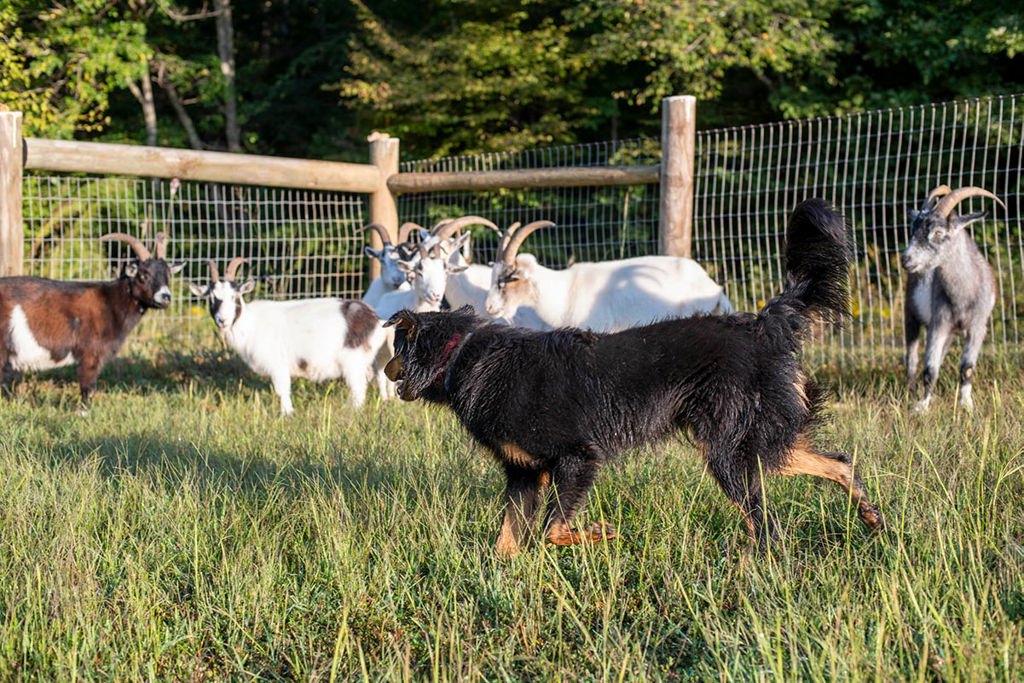
Goat Dogs
This article was originally published in the English Shepherd Club of America Who's Who Breeder Manual on Pages 29-30
There will always be a tender spot in my heart for English Shepherds. The first dog I can recall as a child was a black and tan English Shepherd named Fan owned by my father, John Ursery.
I lived on a farm near Bellevue, a small town approximately twelve miles west of Nashville, Tennessee, with my parents, six sisters and three brothers.
Fan always accompanied my older brothers when they went squirrel and racoon hunting. In everyone's opinion, Fan was the best tree dog they had ever seen.
Every afternoon she would go to the pasture, alone, and drive in the milk cows, firm, but gentle, as a person would drive them. To prove Fan's efficiency, father would command Fan to “catch it”, then would point his finger at any animal on the farm. She would grab it just like a Bull Dog. My father always said he could take old Fan and drive a herd of cattle more easily with her than with ten horsemen.
Since I was a boy, six or seven years old, these were not to me Fan's outstanding qualities. Most important to me was the fact that she went with me down the ditch banks and fence rows to catch young rabbits and into the woods to run chipmunks into the ground, then help me to dig them out. We would be in the woods hours on end with squirrels all around us. Fan would never tree them. She would only bother with ground animals. You see, she knew I did not have a gun. Yet, when she went hunting with my father or brothers, she would not even look at a chipmunk.
Old Fan died when I was eight years old. Three years later a school chum told me a neighbor of his had English Shepherd puppies and would give me one. Next day, he brought me a black and tan puppy about eight weeks old.
I carried him home and put him down in the yard. A pet lamb came up to meet me, and the puppy although he had never seen a lamb, barked! The lamb was unafraid. The puppy then ran around behind the lamb and heeled it. As if by instinct, the puppy rolled over and laid on his side, expecting the lamb to kick him. I had that puppy only four months before he had to be killed because of rabies.
At the age of eighteen years I enlisted in the Army and later married. We did not have an opportunity to own English Shepherds until 1950. At that time, I was returned to the U. S. A. from the Far East Command. I was placed in the Army-Navy Hospital at Hot Springs, Arkansas, to await release from the Army because of a disability.
During my stay in the hospital, I read in “Dog World" magazine that Mr. Tom D. Stodghill was an authority on English Shepherds. Through corresponding with him, I found that he believed that black and tan was the true color of the English Shepherd. I purchased a beautiful black and tan puppy from Mr. Stodghill and he cared for it for me until I was released from the hospital in November of 1950.
My Wife, lman, and I then purchased a farm bordering on the Big Maumelle River, twenty-five miles west of Little Rock, Arkansas on Highway No. 10. This first puppy died of distemper, so we purchased a pair of black and tan puppies from Mr. Stodghill. At his suggestion, I put them to nursing on goats. They were completely contented and happy in the fields with the goats.
For teaching a puppy to guard sheep or goats and stay close to the barn, this is the finest training he could receive. My English Shepherds lived with the goats day and night and would not leave them even to be fed. When I called them, the dogs would come running, and the goats would follow them. When the dogs got too far ahead of the flock, they would turn back and get their goats.
Fearing hunters might steal them, I brought the pups to the house last fall. I had to pen the dogs to keep them from returning to the goats. My dogs are fearless and will protect my stock from man or beast.